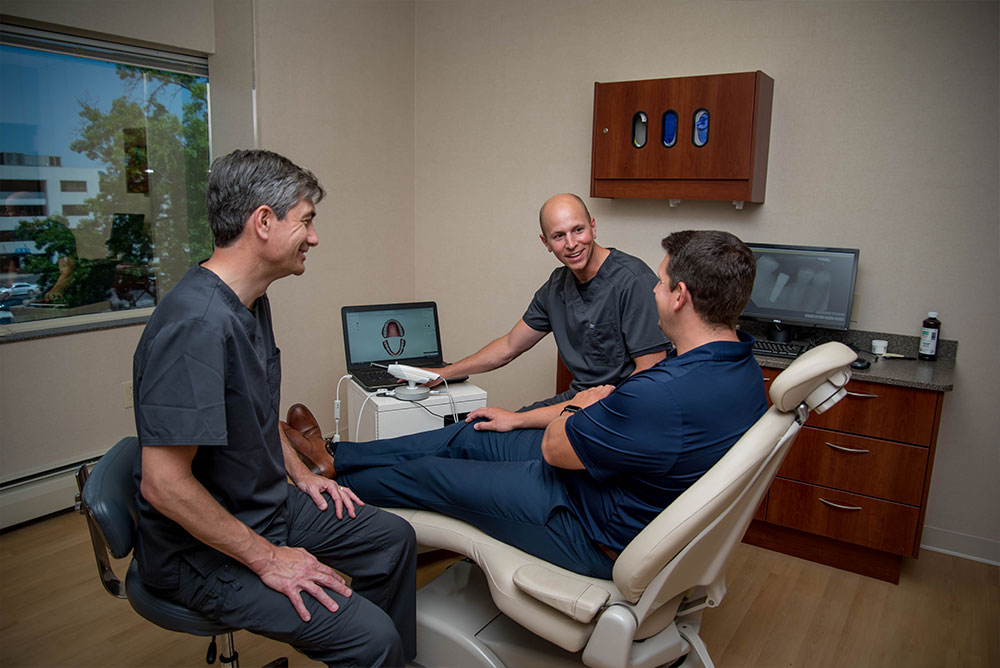Receding gum lines are a common problem.
Known as gum recession, the condition causes the gum tissue surrounding the teeth to wear away or pull back, exposing more of the tooth, or tooth’s root for many people.

A process that can occur gradually over time, receding gums lead to continual root exposure and potential complications.
In addition to the serious effects of gum recession, including damaged supporting tissue and bone structures — and possibly tooth loss — it can cause some to be unhappy with their smile. While a “gummy smile” or uneven gum line due to excess gum can make the teeth look too short, a receding gum line can commonly cause the tooth root to become exposed, making your teeth look “long.”
Fortunately, the gum grafting surgical procedure can protect your teeth from the damaging effects of gum recession and improve the appearance of your smile.
Periodontal Plastic Surgery Expertise = A Healthy, Improved Smile
As experts in plastic periodontal surgical techniques, we at Morgan & Lemke Periodontics & Dental Implants are highly skilled at treating gum recession with grafting techniques. Also known as periodontal plastic surgery, gum graft surgery repairs the damaged areas to help prevent additional recession and bone loss. At Morgan and Lemke, we use advanced techniques to make the procedure as minimally invasive as possible.
Different types of gum grafting can be performed based on your specific needs. The three common types of gum tissue grafts include:
- Connective-tissue grafts. The most common method used to treat root exposure, a connective-tissue graft includes cutting a flap of skin at the roof of your mouth (palate) and tissue from under the flap (subepithelial connective tissue), and then stitched to the gum tissue surrounding the exposed root. After the connective tissue — or the graft — is removed from under the palatal flap, the flap is stitched back down.
- Free gingival grafts. Similar to a connective-tissue graft, free gingival grafts involves using tissue from the roof of your mouth. But instead of making a flap and removing tissue from under the top layer of flesh, a small amount of tissue is removed directly from the roof of the mouth, then attached to the gum area being treated. Free gingival grafts are a good option to treat thin gums and need additional tissue to enlarge the gum line.
- Pedicle grafts. To perform the pedical graft procedure, tissue is grafted from gum around, or near, the tooth needing repair. The flap, called a pedicle, is only partially cut away leaving one edge attached. The gum is then pulled over or down to cover the exposed root and sewn into place. The pedical graft procedure is only recommended for people who have plenty of gum tissue near the tooth.
The Why of Gum Grafting
While a gum graft can reduce further recession and bone loss, in some cases it can cover exposed roots to protect them from decay. As a result, this may reduce tooth sensitivity and improve the overall look of your smile. Whether to improve function or esthetics, our patients who are treated with gum grafting receive dual benefits: a beautiful new smile and improved periodontal health.
